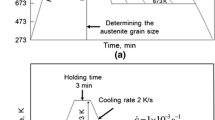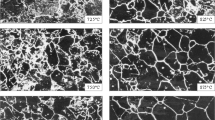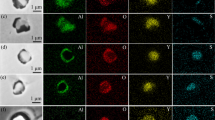Conclusion
A high aluminum concentration (0.052%) in steel 12Kh1MF favors intensive decomposition of the solid solution with formation of a large quantity of carbides (VC, M23C6), additional precipitation of aluminum nitride AIN (with > 0.01% N), more uneven distribution of dispersed particles and formation of zones free of precipitates along boundaries, and also affects the dislocation arrays. This structure is unstable and leads to brittle intercrystalline fracture; the long-term strength of steel 12Kh1MF decreases considerably in this case.
Similar content being viewed by others
Literature cited
K. A. Lanskaya and L. V. Kulikova, "Effect of residual microimpurities on the properties of Cr-Mo-V steel", in: Heat-Resistant and Scale-Resistant Metallic Materials [in Russian], Nauka, Moscow (1976), p. 159.
K. A. Lanskaya, "Modern boiler steels and means of improving their quality", Stal', No. 7, 649 (1976).
Yukitoshi Teruo and Nishida Kazuhiko, Sumitomo Search, No. 10, 28 (1973).
Additional information
I. P. Bardin Central Scientific-Research Institute of Ferrous Metallurgy. Translated from Metallovedenie i Termicheskaya Obrabotka Metallov, No. 12, pp. 2–4, December, 1979.
Rights and permissions
About this article
Cite this article
Lanskaya, K.A., Smirnova, A.V., Kulikova, L.V. et al. Effect of retained aluminum on the fine structure of steel 12Kh1MF. Met Sci Heat Treat 21, 893–896 (1979). https://doi.org/10.1007/BF00706619
Issue Date:
DOI: https://doi.org/10.1007/BF00706619




